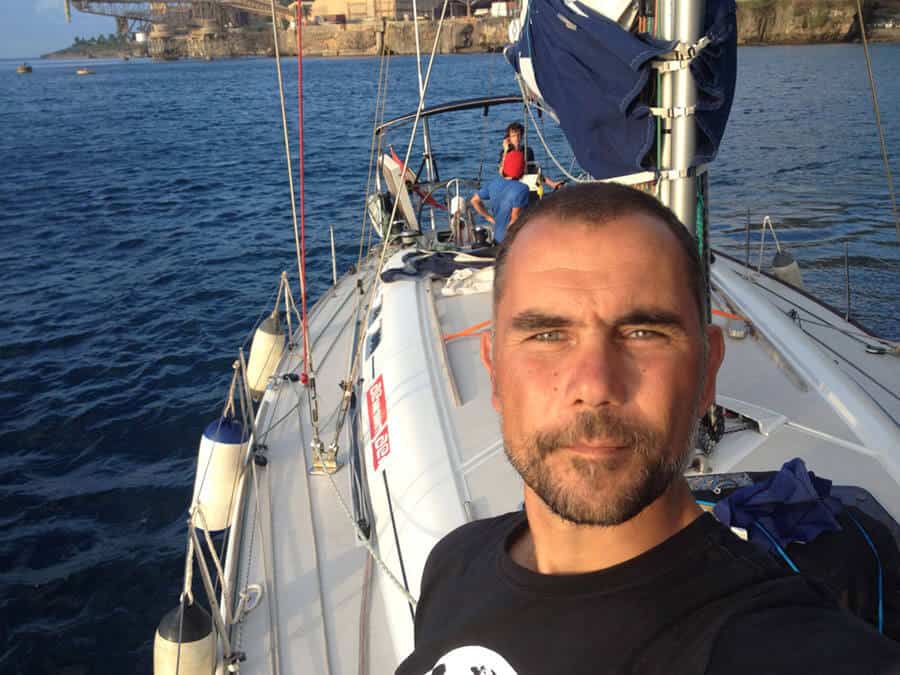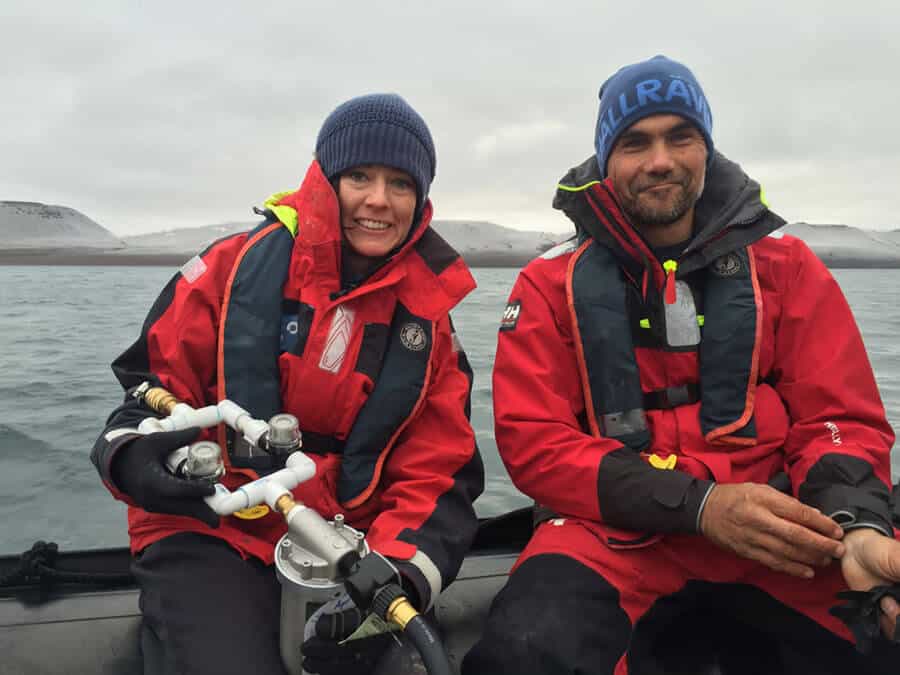How one man’s commitment helped drive legislative policy and decisions made by corporations relating to the use of plastics, his mission to help people build stronger communities, his rafting adventures on rafts made of junk, his thoughts on how corporates could pitch in to help the environment, microbeads and more. In this interview, we talk with Dr. Markus Eriksen.
Dr. Eriksen, first of all please tell us about your motivations into the research of plastic pollution in the oceans.
I spent 5 months living on the river until I reached the Gulf of Mexico. I saw so much trash that I chose to commit my career to stopping plastic pollution.
In 1991 I was a Marine in the Persian Gulf War, and I remember sitting in a hole in the sand among the burning oil wells and thinking “If I survive this war I’m going to raft the Mississippi River. 12 years later, in 2003 I launched a raft called “Bottle Rocket” in Minnesota and spent 5 months living on the river until I reached the Gulf of Mexico. I saw so much trash that I chose to commit my career to stopping plastic pollution. In 2004 I met Charles Mo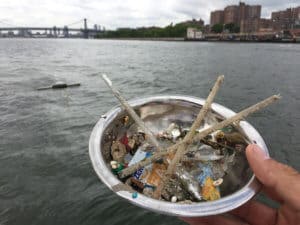 ore, the man who found the Great Pacific Garbage Patch. I worked with him for 6 years and then began my own organization – the 5 Gyres Institute.
ore, the man who found the Great Pacific Garbage Patch. I worked with him for 6 years and then began my own organization – the 5 Gyres Institute.
The mission of the 5 Gyres institute is to use science to drive change. In the last 10 years I have published about 20 research papers which have helped to drive legislative policy, public education, and decisions made by corporations.
What does Leap Lap do?
Leap Lab is our new nonprofit, with a mission to provide people with the science of self-reliance so that they can build stronger communities.
We have five themes: energy, water, growing food, zero waste, ecology, and community. We are starting With three science centers across the United States, with one in California, Florida and Wyoming.
Tell us about your rafting adventures in the rivers and the oceans. What kind of rafts did you use? What did you find?
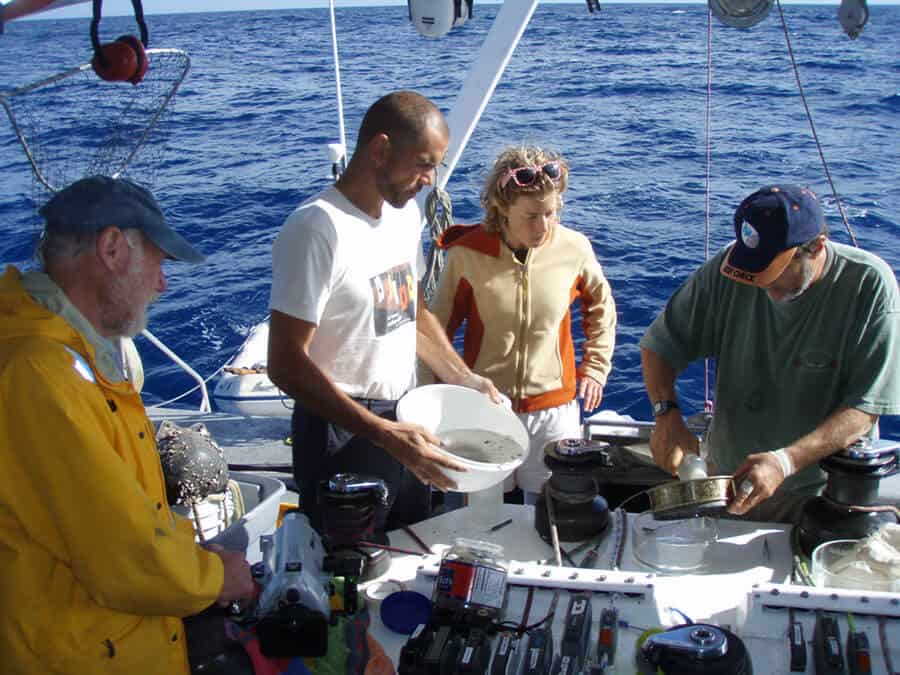
My two biggest rafting adventures were down the Mississippi River and across the Pacific Ocean. What I found on the Mississippi river was that I fell in love with nature, and was inspired by the many wonderful people I met along the way, but when I saw and there’s trails of plastic trash, I knew I had to do something about it.
The JUNKraft Was our biggest raft. We sailed 2600 miles from California to Hawaii in three months. We found plenty of Microplastics along the way. Personally, my love of nature grew deeper and I found tremendous joy in that solitude.
What are the distances you’ve traveled on these rafts?
I traveled over 2000 miles down the Mississippi river on “bottle rocket“. On the junk raft we traveled another 2600 miles.
To an extent one observes individuals who are responsible towards the environment. What are your perceptions relating to this and perhaps even more importantly corporate responsibility?
It really depends on the corporation. If the corporations are privately held, meaning they are run by a family or a small group of people, then you can make a reasonable argument about what is best for society. You have a chance to change their minds.
Privately held companies answer to their shareholders, and their CEOs have a fiduciary responsibility to make a profit every few months. They are the most difficult to convince to change their minds.
I work with many colleagues on something called “extended producer responsibility“ which is about a legislative policy that changes the rules for everyone to follow. Many companies don’t mind us as much because it keeps other companies from having an unfair advantage.
Everyone follows the same rules. Therefore, the way to change corporations is really through policy, unless you get to the human beings that own the company.
How many tonnes of plastic are there in the oceans and what is the result?
We published a paper back in 2014 in the journal “PLOS One“ that estimated 225,000 tons of plastic trash floating in the world oceans. The results are ecological harm, social harm and economic harm.
What are microbeads and how are they harmful?
Microbeads are a kind of “primary microplastic“ meaning they were designed to be small so that they could be used in personal care products as an abrasive in face cleaning creams. Some of those products could have up to 300,000 microbeads in one tube! They are harmful because they get into the environment through sewage runoff or sewer sludge that is dumped on agricultural fields. From there they go into the environment where they can soak up other chemicals, like pesticides, and if they are eaten by marine life, those toxins can stay in their bodies.
What is your thought? Are consumers aware of the presence of any such thing called microbeads in the day to day products used by them such as even toothpaste?
In most cases, consumers trust that consumer brands are not going to cause harm, or do things to hurt their customers or the environment.
I don’t think so. In most cases, consumers trust that consumer brands are not going to cause harm, or do things to hurt their customers or the environment. So, when people see microbeads in a product they probably just say “wow that’s interesting, maybe I need that on my face.“
This is why we need smart legislation to make good rules but everyone has to follow. When we passed the federal bill to end the use of microbeads, every corporation had to follow the law. It worked.
Apart from the environment what is the harm people cause to themselves when using products containing microbeads?
Microbeads are not generally harmful to people. But, I have spoken to some dentists who tell me they have found microbeads inside the gums of patients who were not healing from dental surgery. Those patients have brushed their teeth after surgery and plastic microbeads got stuck between the stitches in their mouths.
Is there any way to rid the environment of microbeads?
Not really, once they are released to the environment, that’s it. They are there forever. Again, that’s why I am a strong proponent of preventative strategies to stop Plastic from harming our world.
What did you learn from the Japan Tsunami?
The Japan tsunami taught us how quickly floating waste can move across the ocean with Gyre currents. We picked up a lot of debris that was clearly from the tsunami. But what I also learned is that it is important to be very sensitive about the items that you find. Many things lost to sea belong to people, have a history, and that should never be taken lightly.
What is a gyre system in the oceans?
Subtropical Gyres are wind-driven surface currents that typically rotate around high pressure systems. There are five in the world. The two in the northern hemisphere rotate clockwise, whereas the three in the southern hemisphere rotate counterclockwise.
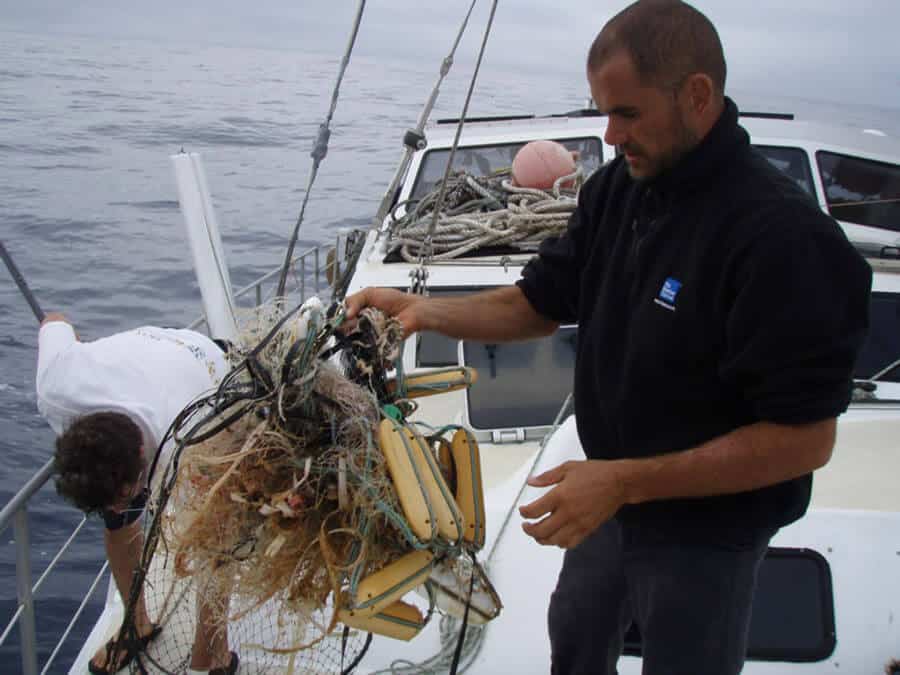
Dr. Eriksen, please tell us about ocean gyre plastic?
I can quickly say that most plastic in the ocean is fishing gear, but what washes up on mainland Shores is single-use plastic. We have found that most of the trash coming down the worlds rivers is single use plastic and it generally gets pushed back on the beach further down the coast line.
In the middle of the ocean the plastic trash is mostly coming from ships. It is very important to note that when you are in the middle of the ocean you do not see islands of trash at all. Most of Ocean plastic is micro plastic. It is less than 5 mm in size. There are no islands of trash in the ocean. It is more like a smog of microplastic particles everywhere you look.
What are your other interests when you find time to be away from battling for the environment?
I did dinosaurs in the summers, which I’ve been doing for 25 years. In the coming years we are going to build three museums across the country. That is the phase 1 goal of Leap lab. We will fill these little science centers with dinosaur skeletons.
Our readers are mainly the youth from different parts of the world who look up to personalities such as yourself for inspiration. A word of advice for them?
Without science, we are destined to waste time and money on bad decisions.
My word of advice is to embrace science as the way we understand nature and the entire universe. Without science, we are destined to waste time and money on bad decisions. So go out and discover your world, fall in love with it, and you will find joy and purpose in defending it.
Dr. Marcus Eriksen is quite a multi-dimensional personality. He’s an environmental scientist, an educator and also an author. He has co-founded the 5 Gyres Institute for the research of plastic pollution in the oceans and Leap Lap which is a network of science centers for the building of self-reliant communities.
Photos: From the Archive of Dr. Marcus Eriksen
More educational interviews with professors and scientists here:
Dr. Emily Duncan, Forbes „30 Under 30“ Innovator – Love for Turtles Beats Plastic Pollution
Meet Dr. Stephanie King An Illustrious Figure In The Study Of Dolphins
Support us!
All your donations will be used to pay the magazine’s journalists and to support the ongoing costs of maintaining the site.
Share this post
Interested in co-operating with us?
We are open to co-operation from writers and businesses alike. You can reach us on our email at [email protected]/[email protected] and we will get back to you as quick as we can.
